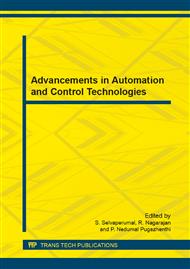p.489
p.495
p.501
p.511
p.519
p.523
p.529
p.537
p.543
Preeminent System for Detecting Venomous Banking Sites in Online Business
Abstract:
. Phishing has become most notorious security issues in online real time web pages. Many studies and ideas have been proposed related to phishing attack in order to overcome the security issues. Phishing attack can be easily done by Uniform resource locator (URL) obfuscation. It is the trick where the user will be forwarded to fake web page which has look and feel effect as the original web page when they click through the fake link. Organizations which use online business and transaction like ebay, paypal use many preventive approaches like blacklist, whitelist of URL in order to prevent any online theft using phishing attack. This paper propose a novel idea for detecting Phishing attack by checking the URL patterns of the suspected page with generated legitimate common URL pattern by inspecting different international URL patterns of that particular banking site.
Info:
Periodical:
Pages:
519-522
Citation:
Online since:
June 2014
Authors:
Keywords:
Price:
Сopyright:
© 2014 Trans Tech Publications Ltd. All Rights Reserved
Share:
Citation:


